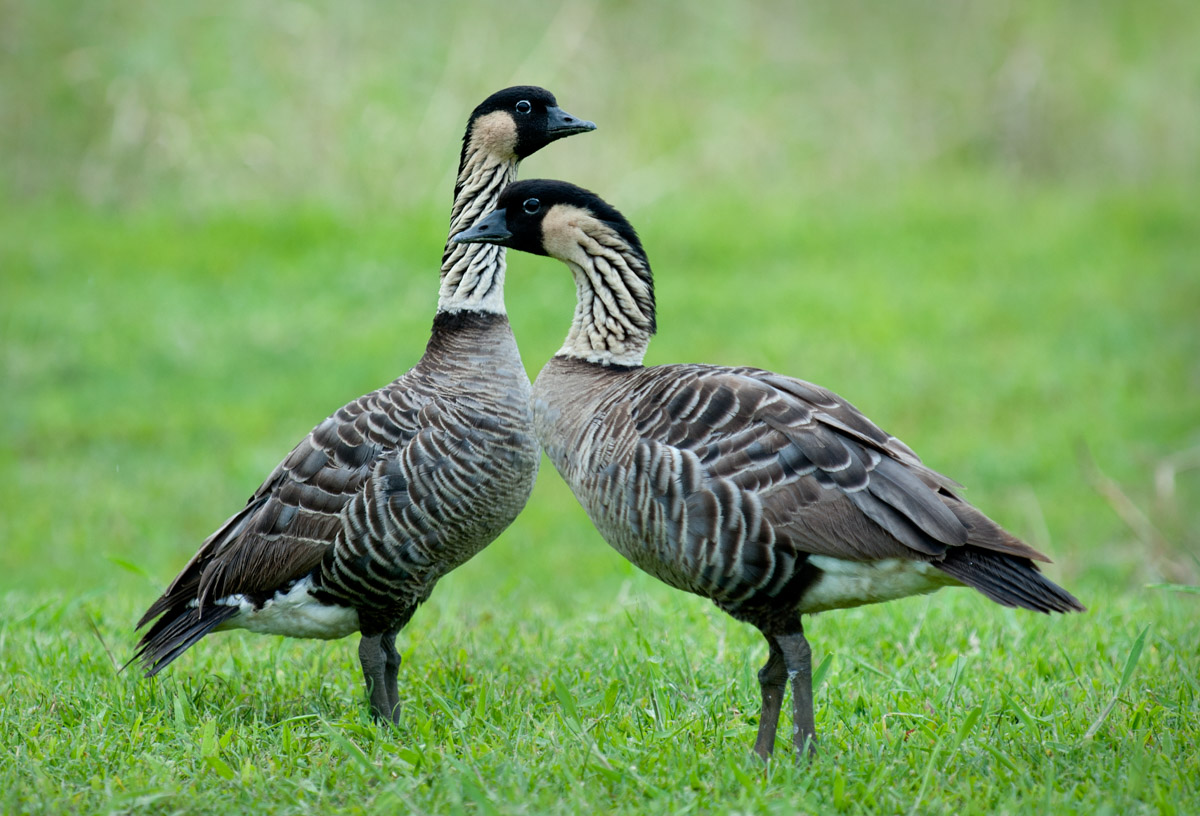
The Hawaiian Goose known in Hawaii as the Nënë can today be seen on the Islands of Hawaii (The Big Island), Maui, and Kauai. They have the smallest range of any living goose. They were a once widespread species with an estimated population of over 25,000 individuals. Historically they occurred on all of the major islands but during the 1800s they suffered a dramatic decline that resulted in extinctions on all islands except Hawaii. Even on Hawaii the population crashed and by 1950 only 30 wild birds remained. The decline of the Nënë coincided with the arrival of the first Europeans in 1778 who brought with many introduced mammals including dogs, pigs and later mongoose. The naturally inquisitive and curious goose had evolved with no natural predators and were no match to these introduced predators. The Europeans also hunted the goose until this was banned in the early 1900’s. The geese also go through a lengthy six-week period when they molt their flight feathers during which they are totally flightless and even more susceptible to predation. The Europeans also altered the lowland habitats of the Hawaiian Islands too and gradually only the upland mountain habitats were habitable for the goose. Without action it seemed it was only a matter of time before the bird would be extinct in the wild!
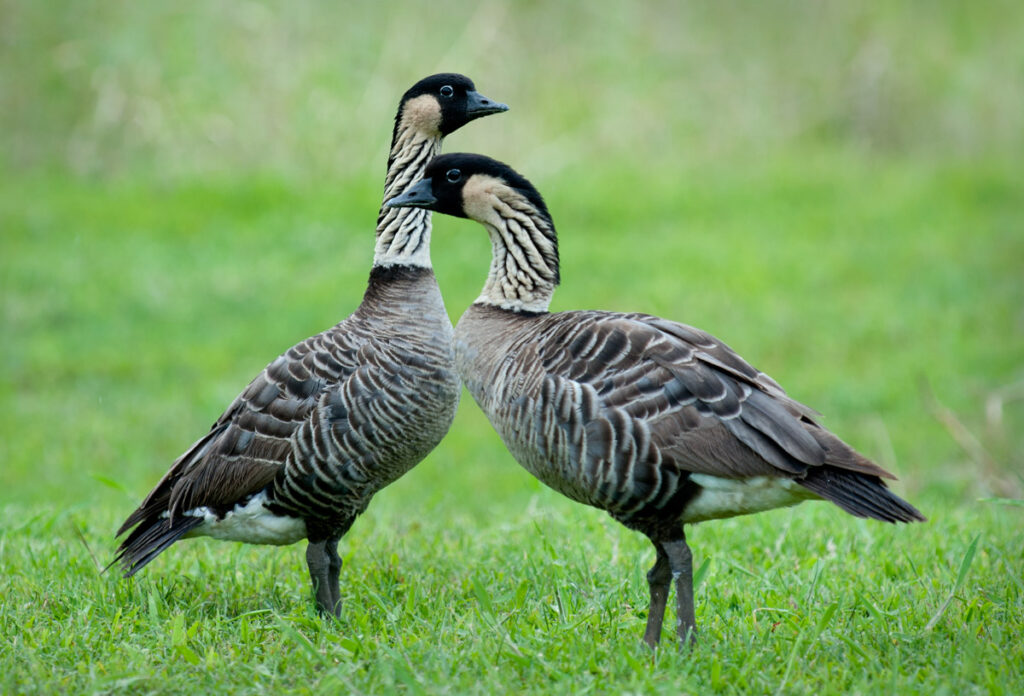
Unlike most other geese throughout the world Nënë do not require ponds and lakes to survive though they will readily use them if available. They have adaptations such as a taller more upright posture than similar species of geese, this enables them to feed on berries and seeds of native vegetation. As they spend more time on land and rough terrain they have feet that have limited webbing and longer toes. They are only found on the Hawaiian Islands and due to less requirement for long flights they have shorter wings than other geese; they generally do not migrate even between the Islands in the archipelago. The Hawaiian name Nënë is derived from its call which is a murmuring nay-nay.
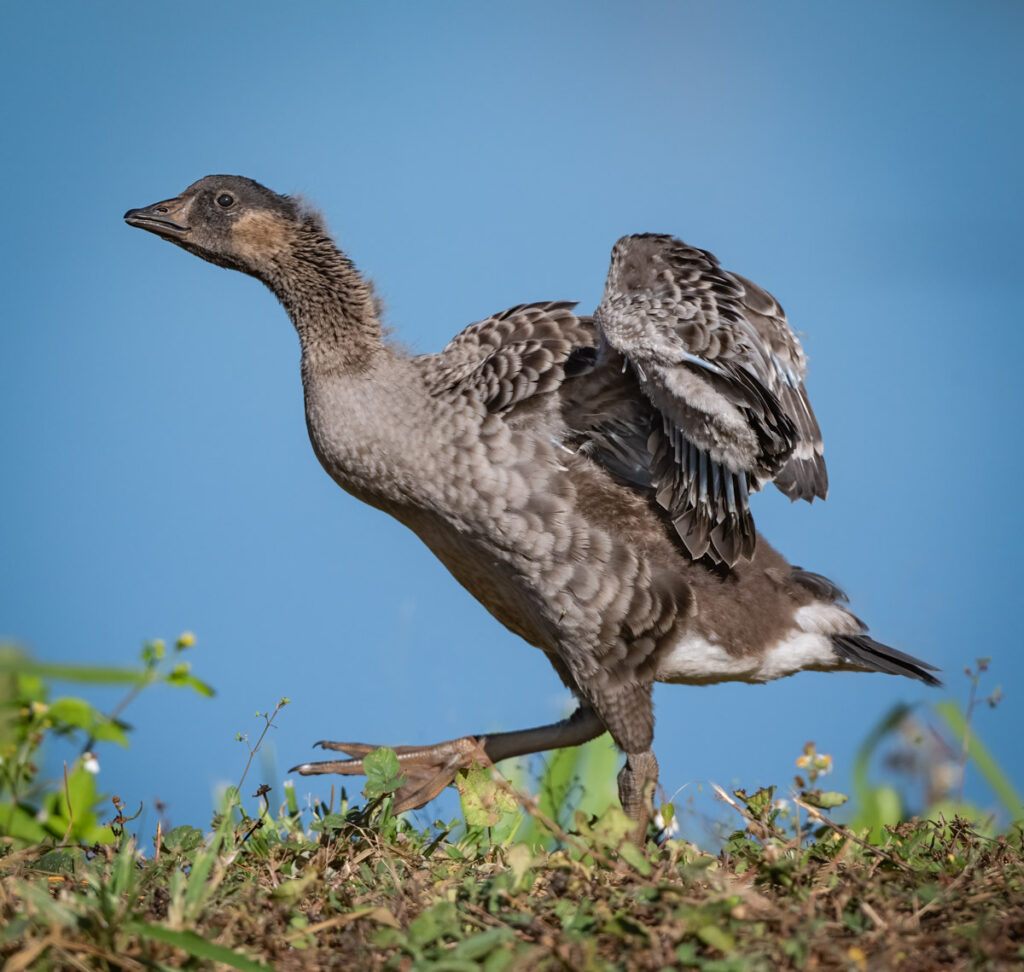
On the other side of the world in the United Kingdom, Sir Peter Markham Scott was born in 1909. He was the son of Robert Falcon Scott (famous for his race to be the first person to reach the South Pole, ultimately coming second to the Norwegian Roald Amundsen before his party perished on the return trip). Peter became an avid ‘wildfowler’ with a special fascination of geese. After observing a vagrant Lesser White-fronted Goose among the large flock of Greater White-fronted Geese on the River Severn Estuary in Gloucestershire Scott came up with the idea of creating Slimbridge; an area to showcase the world’s wildfowl to the public but with a mission for scientific study and conservation of wildfowl. Slimbridge became the headquarters of the Severn Wildfowl Trust known today as the Wildfowl and Wetlands Trust (WWT). Scott had tried to acquire a pair of Nënë for his private collection from a Hawaiian land rancher in 1936 but before that could happen the Second World War broke out. After the creation of Slimbridge Scott reignited his interested in the Nënë after hearing initial conservation attempts to breed the Nënë at Honolulu Zoo had failed, plus another 30 birds in a captive flock had been lost to a tidal wave. It was a win win situation for both, Hawaii needed help in saving a bird that was most likely to go extinct without help and for Scott it was an initiative that would legitimize the Slimbridge project. Knowing that the survival of the species would be safer if birds existed at another location away from Hawaii the Hawaiian authorities agreed to the transfer of birds to the United Kingdom. In 1950 two Nënë were shipped to Slimbridge, however both birds turned out to be females and laid infertile eggs. After an urgent telegram back to Hawaii a male bird was sent over and by the end of the year nine goslings had been successfully raised.
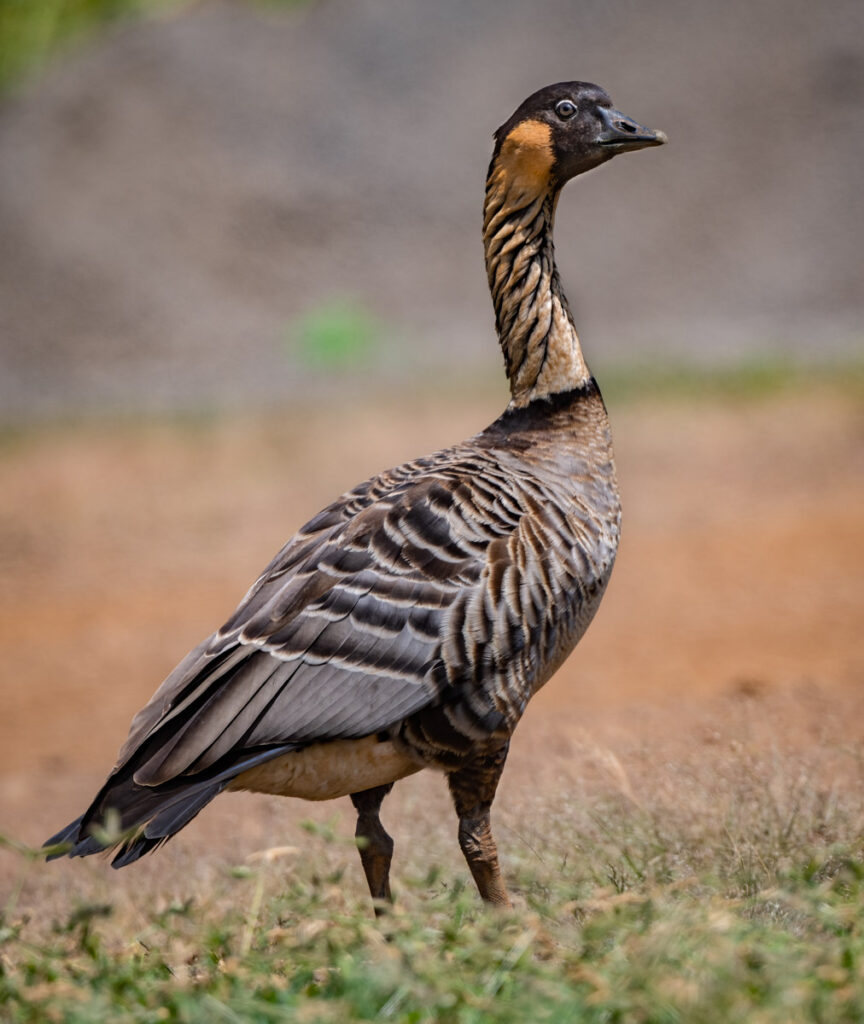
In 1962 Slimbridge sent 35 Nënë back to Hawaii to establish new flocks back into the wild. These birds along with birds raised in Hawaii using the same techniques that Scott had inspired at Slimbridge together helped save the bird from extinction. Hawaiian authorities had identified a number of areas both in Hawaii and Maui that would become sanctuaries. In these areas control of predators especially Mongoose was enforced. By the early 1970’s Slimbridge had sent over 200 geese back to Hawaii and the conservation project was exclaimed as a great success as the flocks were now showing signs of self-sustaining. Evidence that the public had taken the Nënë to their hearts was when the State made the goose its State bird! Today the population stands at approximately 2000 birds. However the populations on Maui and the Big Island especially would likely decline without continued conservation measures, especially continued periodic releases of birds added to the flocks and predator control. The population on Kauai is faring better and increasing, this appears to be mainly due to better natural lowland feeding habitat and the lack of Mongoose on the island.
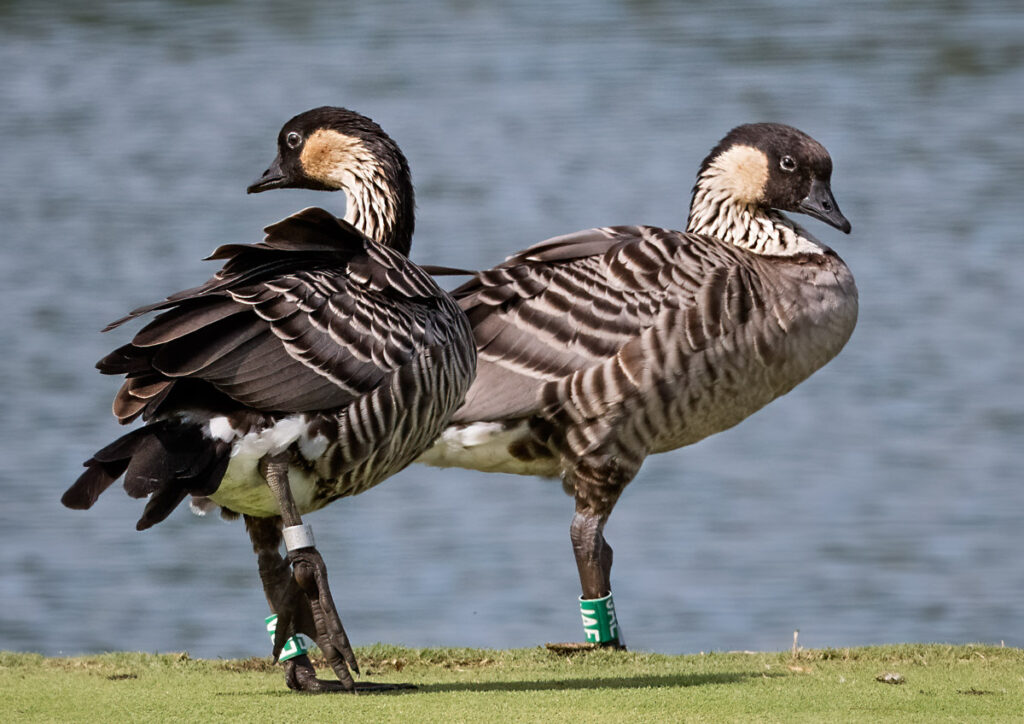
In 2022 Owen traveled to Hawaii (with guide Nathan Goldberg) and visited the four main Islands over a three-week period. He was able to enjoy and photograph the Nënë in their wild state on both Kauai and the Big Island (Hawaii) as well as observe them on Maui. In October, Owen visited Slimbridge WWT Reserve in Gloucestershire, United Kingdom (with guide Steve Huggins) and was able to see the Nënë and read all about the conservation efforts to save it in the Mission Impossible Exhibit on the grounds of the reserve. (Visit www.wwt.org.uk to find out more)


